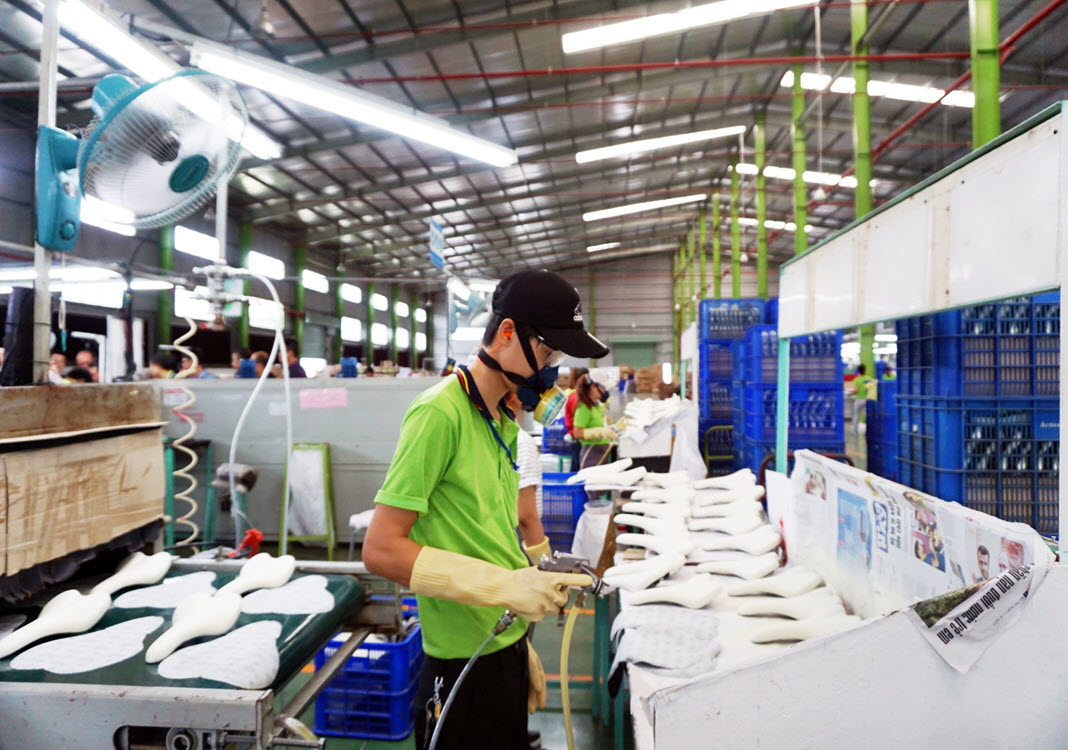Vietnam’s experience and initial success in combating Covid-19 should be considered and applied to other tasks to ensure economic growth in the current context. It is important to set clear targets and implement policies comprehensively, with a consensus across different groups of people, especially those in charge.
On May 22, at a regular government meeting on foreign direct investment (FDI), the Prime Minister agreed to set up a special task force to boost capital inflows, one of the five growth engines in response to the economic challenge posed by Covid-19.
This has captured the attention of domestic and foreign enterprises. Some foreign investors in Vietnam have discussed concrete action plans to support and coordinate with this task force.
As the pandemic continues evolving in complex ways throughout the world, Vietnam’s socio-economic spheres have been adversely affected. The FDI sector is not spared from the detrimental impacts of Covid-19. Unless it thrives again, production, import and export will keep shrinking and hamper growth in 2020.
The main aim of the task force is to identify and implement measures to deal with the lack of FDI for stoking growth. Other roles that are considered pressing, such as aligning investment institutions and policies with international norms, with an emphasis on consistency, transparency and competitiveness to help Vietnam’s business environment and competitiveness enter the ASEAN 4 group before 2019 and the ASEAN 3 group before 2030(1), will still be carried out by local and central investment agencies.
Such specific role assignment will help the task force complete its task within a given time frame (say, until the end of 2021) and then disband instead of interfering with investment-related State agencies in the long run. The insights, if any, from boosting investment during the pandemic period will be noted to improve subsequent investment promotion efforts.
This being the case, it is crucial for the task force in particular and government agencies in charge of foreign investment in general to maximize this source of capital, including new investment and disbursement of registered capital in 2020, to help production recover and fuel export by foreign-invested enterprises even in the second quarter of 2020 so as to maintain commendable growth in 2020 and 2021. There is a need for the task force to join forces with other local and central agencies in charge of foreign investment in the same way that different stakeholders collaborate to fight Covid-19.
An analysis shows that both fresh foreign investment and the disbursement of registered foreign investment, for which incentives will be important, both play a critical role.
However, the first approach is a long-term measure that may not help to quench the short-term thirst for capital. Many measures should be promptly adopted, such as reviewing the list of projects in need of investment and reducing the time taken to license new projects. Given the political complexity surrounding sovereignty, international trade and the pandemic, Vietnam must develop a general filter, which uses “body temperature scanners” to assesses projects and investors to steer clear of detrimental impacts on the economy, society, defense, public security and the national identity.
Apart from being screened for suitability with “temperature scanners,” foreign investors must also “wear face masks.” In other words, they should take with them environmental protection plans on their trips to Vietnam. Only projects committed to environmental protection can enter the country.

Many registered projects have ample capital for disbursement. Foreign investment in Vietnam has been on the rise. From 2016 to the end of the first quarter of 2020, when the socio-economic plan for 2016-2020 was carried out, the volume of registered capital was US$147.75 billion, the volume of disbursed capital was US$76.63 billion and the volume of capital not yet disbursed was US$71.12 billion. The total volume of registered capital not yet disbursed from 1988 to December 31, 2019 was more than US$154.2 billion(2). If 15% (a modest share) of this amount was disbursed, the total amount disbursed from now until the end of the year would be US$23.13 billion. Coupled with the US$3.85 billion disbursed in the first quarter of 2020, the total volume of foreign investment disbursed in 2020 was US$26.98 billion, up 32.3% from the US$20.38 billion clocked up in 2019. This will bode well for economic growth, job creation and social security in the age of Covid-19.
(*) Chief representative of GIBC in Hanoi, former head of the Foreign Investment Agency
(1) Resolution 50 by the Politburo on August 20, 2019 on improving institutions and the efficiency of foreign investment and partnership until 2030
(2) Data from the Foreign Investment Agency, Ministry of Planning and Investment
By Dr Phan Huu Thang (*)











